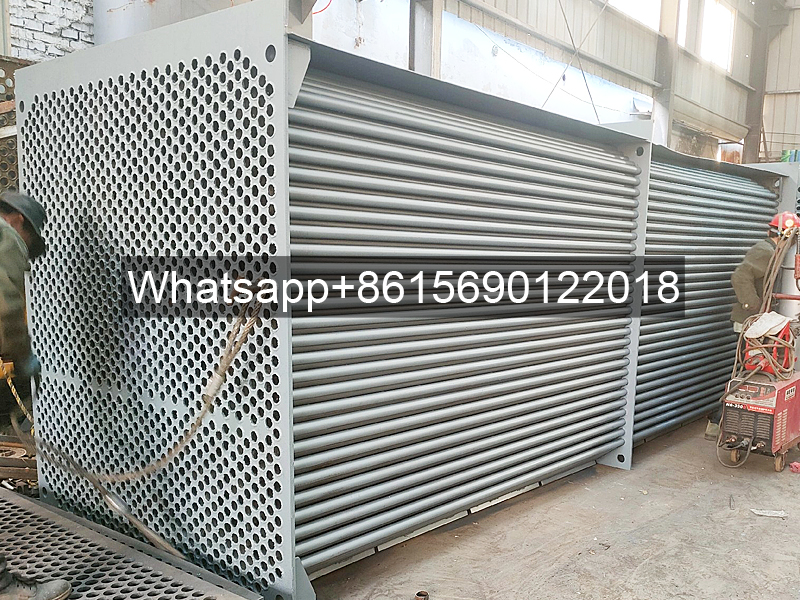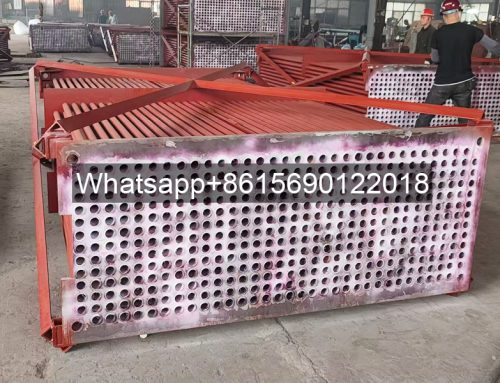Project Description
Product Name: Air Preheater in Thermal Power Plant
- Leave Your Message
An air preheater in a thermal power plant is a preheating device.
An air preheater in a thermal power plant is a device used to preheat the flue gas from the boiler’s tail flue to a certain temperature before entering the boiler. It is a device used to improve the boiler’s heat exchange performance and reduce energy consumption. Air preheaters are generally categorized as plate, rotary, and tubular. This article uses the rotary type as an example to explain the working principle of an air preheater. Large amounts of unburned combustibles can accumulate on heat transfer elements, potentially causing air preheater fires. This article analyzes the causes of fires and provides detailed explanations of the causes and countermeasures. It also provides detailed information on trip analysis and air leakage control.
What is an air preheater?
An air preheater is a preheating device that improves the boiler’s heat exchange performance and reduces heat loss. The air preheater transfers heat from the flue gas discharged from the boiler’s tail flue through the heat sink to the air entering the boiler, preheating the air to a certain temperature. Generally referred to as an air preheater, it is primarily used in coal-fired power plant boilers. It can be categorized as either a tube-box or rotary type. The rotary type is further divided into a hood rotary type and a heating surface rotary type. The heating surface rotary type is more commonly used in power plant boilers. Two-compartment, three-compartment, and four-compartment types are commonly used in boilers, with the four-compartment type being more commonly used in circulating fluidized bed boilers.
Working Principle of an Air Preheater in a Thermal Power Plant
The rotary air preheater will be used as an example to explain the working principle of an air preheater. During operation, it slowly rotates. Flue gas enters the flue gas side of the air preheater and is then discharged. The heat carried by the flue gas is absorbed by the heat sinks in the air preheater. The air preheater then slowly rotates, causing the heat sinks to move to the air side, where they transfer the heat to the air before entering the boiler.
Air preheaters used in boilers are mostly three-compartment types, equipped with fire alarm systems, clearance adjustment systems, and variable frequency control systems. Air preheaters are convenient to use, simple to operate, and safe to operate. They also improve the heat exchange performance of the boiler system, making them widely used in flue gas boiler systems.
Functions of Air Preheaters in Thermal Power Plants
1. Improve and Enhance Combustion
After passing through the waste heat collector, air enters the furnace, accelerating the drying, ignition, and combustion processes of the fuel, ensuring stable combustion within the boiler and improving combustion efficiency.
2. Enhance Heat Transfer
Because of improved and enhanced combustion within the furnace and the increased temperature of the hot air entering the furnace, the average temperature within the furnace is also raised, thereby enhancing radiative heat transfer within the furnace.
3. Reduce Furnace Losses, Lower Exhaust Gas Temperature, and Improve Boiler Thermal Efficiency
Because of stable combustion within the furnace and enhanced radiative heat transfer, chemical incomplete combustion losses can be reduced. Furthermore, the air preheater utilizes the waste heat of the flue gas, further reducing exhaust losses and thus improving boiler thermal efficiency. According to experience, when the air temperature rises by 1.5°C in the preheater, the exhaust gas temperature can be reduced by 1°C. Installing an air preheater in the boiler flue can reduce the exhaust gas temperature by 110-120°C if the air’s waste heat can be reduced to 150-160°C, increasing boiler thermal efficiency by 7%-7.5%. This can save 11%-12% fuel.
4. Hot air can be used as a fuel desiccant
For grate-fired furnaces, hot air allows the use of fuels with higher moisture and ash contents. For power plant boilers, hot air serves as a key desiccant in the pulverizing system and a transport medium for pulverized coal.
Air Preheater Classification
Air preheaters can be divided into two main categories based on their heat transfer method: conductive and regenerative.
Of the conductive air preheaters, the most commonly used is the tubular air preheater. As boiler specifications and capacity increase, the heating surface of the tubular air preheater also increases, which complicates the layout of the rear heating surface. Therefore, large-capacity units mostly use compact, lightweight rotary air preheaters. Air preheaters are generally categorized into three types: plate, rotary, and tubular.
Plate Air Preheater
This type of air preheater is typically made of thin steel plates (1.5-4 mm thick). These plates are welded into rectangular boxes, and several boxes are assembled into a group. The entire air preheater consists of two to four boxes. Flue gas flows downward from the top, passing over the outside of the box, while air passes horizontally inside, turning upward at the bottom. This interaction transfers energy with the flue gas twice, creating a countercurrent flow between the flue gas and air, resulting in better heat transfer efficiency.
Plate air preheaters are rarely used today because they consume more steel, have a less compact structure, and have numerous welds that are prone to leakage.
Tubular Air Preheater
The main heat transfer component of a tubular air preheater is a thin-walled steel tube. Tubular air preheaters are typically cubic in shape, with the tubes arranged vertically and staggered, welded at both ends to the upper and lower tube sheets. A tubular air preheater is equipped with an intermediate tube sheet within a tube box. Flue gas flows vertically through the preheater along the steel tubes, while air flows horizontally through the preheater, completing heat transfer.
The advantages of tubular air preheaters are good sealing, high heat transfer efficiency, and ease of manufacturing and processing. Therefore, they are commonly used in power plant boilers and industrial boilers. Disadvantages of tubular air preheaters include large size, easy clogging of the steel tubes, difficulty in cleaning, and wear at the flue gas inlet.
Rotary Air Preheater
The rotary air preheater is the most common type of regenerative air preheater. It heats the air by alternating the passage of flue gas and air over a metal heating surface. Rotary air preheaters can be categorized by their motion: rotating the heating surface or rotating the hood. The two air preheaters in this furnace are three-compartment rotary air preheaters.
A rotor rotary air preheater consists of a cylindrical rotor, a fixed cylindrical casing, and a drive mechanism.
Rotary air preheaters can be divided into two types: a rotor-rotary type with a rotating heating surface, and a duct-rotary type with a rotating air duct.
A rotor-rotary air preheater consists of a rotating circular rotor and a stationary casing. The rotor-type heating surface is divided into compartments, each containing heat storage plates. These plates absorb and store heat from the flue gas. When the heat is transferred to the air side, the plates release the stored heat to the air, lowering their own temperature. The continuous rotation of the heating surface continuously transfers heat from the flue gas to the air, heating the air and cooling the flue gas. This is the operating principle of a rotary air preheater.
The main advantages of a rotary air preheater are its small size, light weight, and tolerance for wear on heat transfer components, making it particularly suitable for use in large boilers. However, its disadvantages are its complex structure, high power consumption, and high air leakage.
Auxiliary Systems
Rotary preheaters mainly include fire alarms (hot spot detection), clearance adjustment, variable frequency control, lubrication oil systems, rotor stall alarm systems, and soot blowing and cleaning systems.
Key issues affecting the performance of rotary air preheaters are air leakage, corrosion, and ash blockage. When designing a tubular air preheater, the air flow rate and tube box dimensions should be appropriately selected, or anti-vibration baffles should be installed along the airflow direction to prevent cavity resonance. Anti-vibration baffles also reduce noise.
Air leakage is a significant issue in rotary air preheaters. Measures should be taken during design, manufacturing, installation, and operation to ensure that appropriate sealing gaps are maintained between the moving and static components when hot. Both tubular and rotary preheaters are susceptible to corrosion and ash blockage when burning high-sulfur fuels.
Preventative measures include: installing a heater at the air inlet or recirculating hot air; employing low-oxygen combustion or adding additives to reduce SO2 generation in the flue gas; regularly blowing soot to keep the heating surfaces clean; and using corrosion-resistant materials for the heating surfaces.



